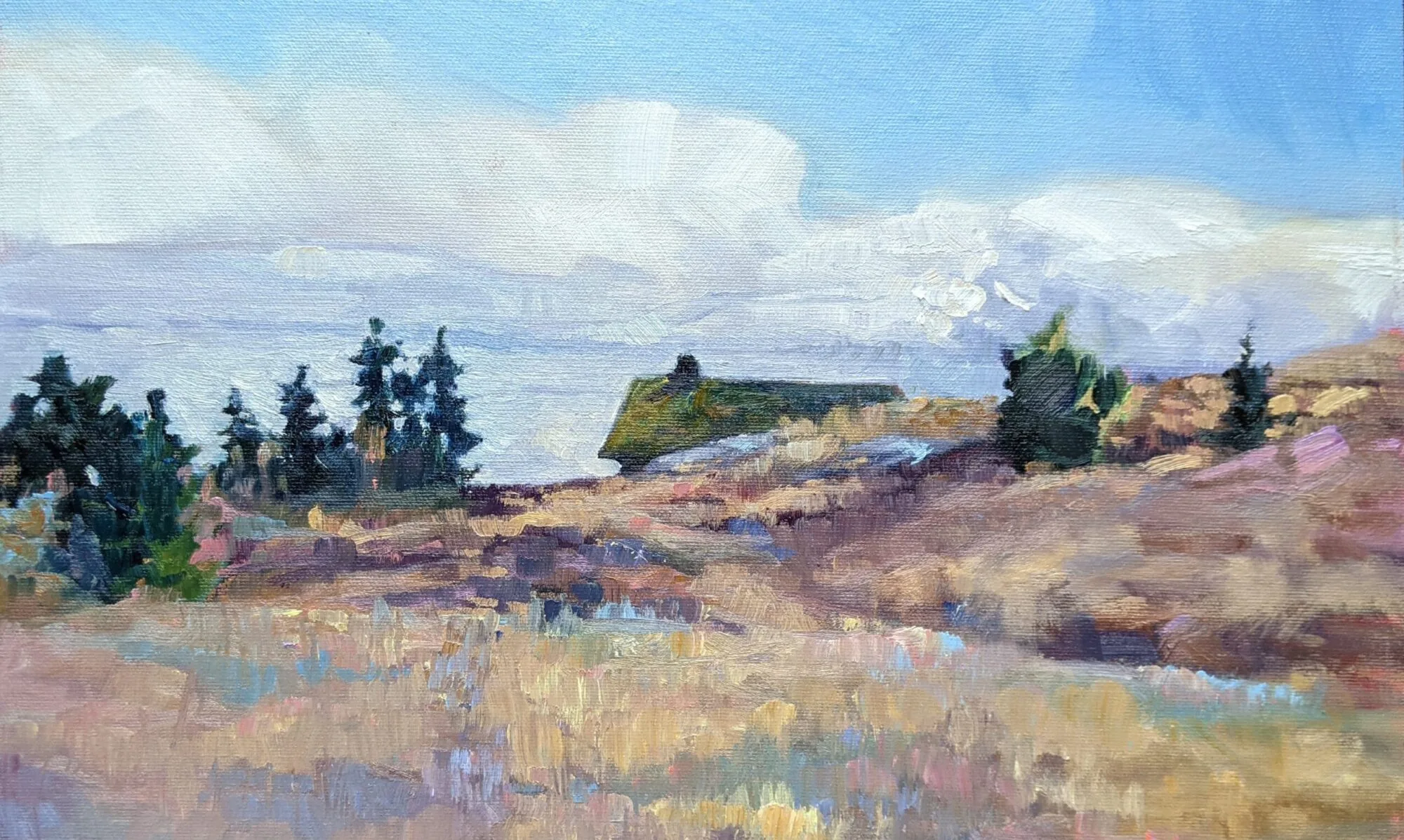It has all the charm of a milk jug but takes watercolor beautifully.
 |
| Marshall Point, oil on Yupo vellum. The bottom right corner was spoiled by potato chip grease. |
I’ve been carrying around a package of Yupo translucent watercolor paper all summer, but lacked an opportunity to work with it in any systematic way. Yupo is billed as an acid-free, archival synthetic surface. It has the hand-feel of a milk jug, and a similar milky translucent surface. That’s because it’s made from polypropylene pellets extruded in a factory in Chesapeake, Virginia. So much for my hemp-wearing Green credibility.
 |
| The initial wash for the above. It has possibilities. |
I find the surface seductive and deep, for many of the same reasons I find cold-wax medium compelling. I’ve been turning over the idea of working with it during my residency at the Joseph A. Fiore Art Center at the Maine Farmland Trust. The point of a residency is exploration, after all.
 |
| A detail of the spruces before I started cutting back in. It’s all experimentation, but I liked them better at this phase. |
Before I started planning a major project, I needed to prove to myself that the product wasn’t just a gimmick. My main watercolor palette contains a mish-mosh of different paints acquired over decades. That’s not very scientific, but I do know how they behave on both hot- and cold-press watercolor paper.
 |
| Brad Marshall got surprisingly similar intensities on the Yupo (left) and cold-press (right). That, I think, is a function of the paint he was using. |
Brad Marshall’s scientific control was much better; he pulled out the same
Winsor & Newton pocket field kit he used
on Wednesday. That’s a good solid kit; I have a similar one. However, it tends to a lighter pigment load than my tube watercolors.
Brad didn’t much like the vellum, but he’s a far more controlled painter than me. I think it works better for the
Pig-Pen temperament.
 |
| Marshall Point lighthouse. There was no glazing possible in the dark passages; the water simply lifted the paint and redistributed it. |
The sheet marks very easily. Next time I work with it, I’ll mount pages on drawing boards while wearing cotton gloves. Yesterday, I worked straight on the tablet with no board at all. It was windy and I found myself using my forearm and fingers to prevent fluttering. My sunscreen and skin oils created a film resist that I could lift with a paper towel and much scrubbing. The potato chip grease, however, made a far more permanent mark. I let paint pool over, but it had absolutely no tooth.
Of course, the same bad practice would mark rag paper as well, waiting to wreck the paper over time.
 |
| More rocks at Port Clyde. I found the separation between foreground and background difficult to control. That may mean there are no midtones possible. |
Yupo’s main selling point is that you can lift paint up, solving the most significant challenge in watercolor painting. It’s fun, but I don’t think it’s any substitution for thinking out a good value structure in advance. As with all watercolor paintings, lifting affects the paints next to the paint being lifted, and the edges it leaves can be over-pigmented and gummy.
Glazing is next-to-impossible; with few exceptions, it just lifts the bottom layer back up. Glazing is such a fundamental part of watercolor technique that this changes the process altogether. Resign yourself to getting the value and hue right the first time, because you won’t be able to do the small modulations that make watercolor painting such a joy.
In some ways, the process felt like
alcohol-marker drawing. At the same time, it encouraged me to finer drawing than cold-press paper ever does. The manufacturer says the paint can be fixed with
Krylon Matte Finish. I’ll try that, because some method of permanent fixing is necessary before this product is useful. Putting it under glass would obscure its beautiful surface.







